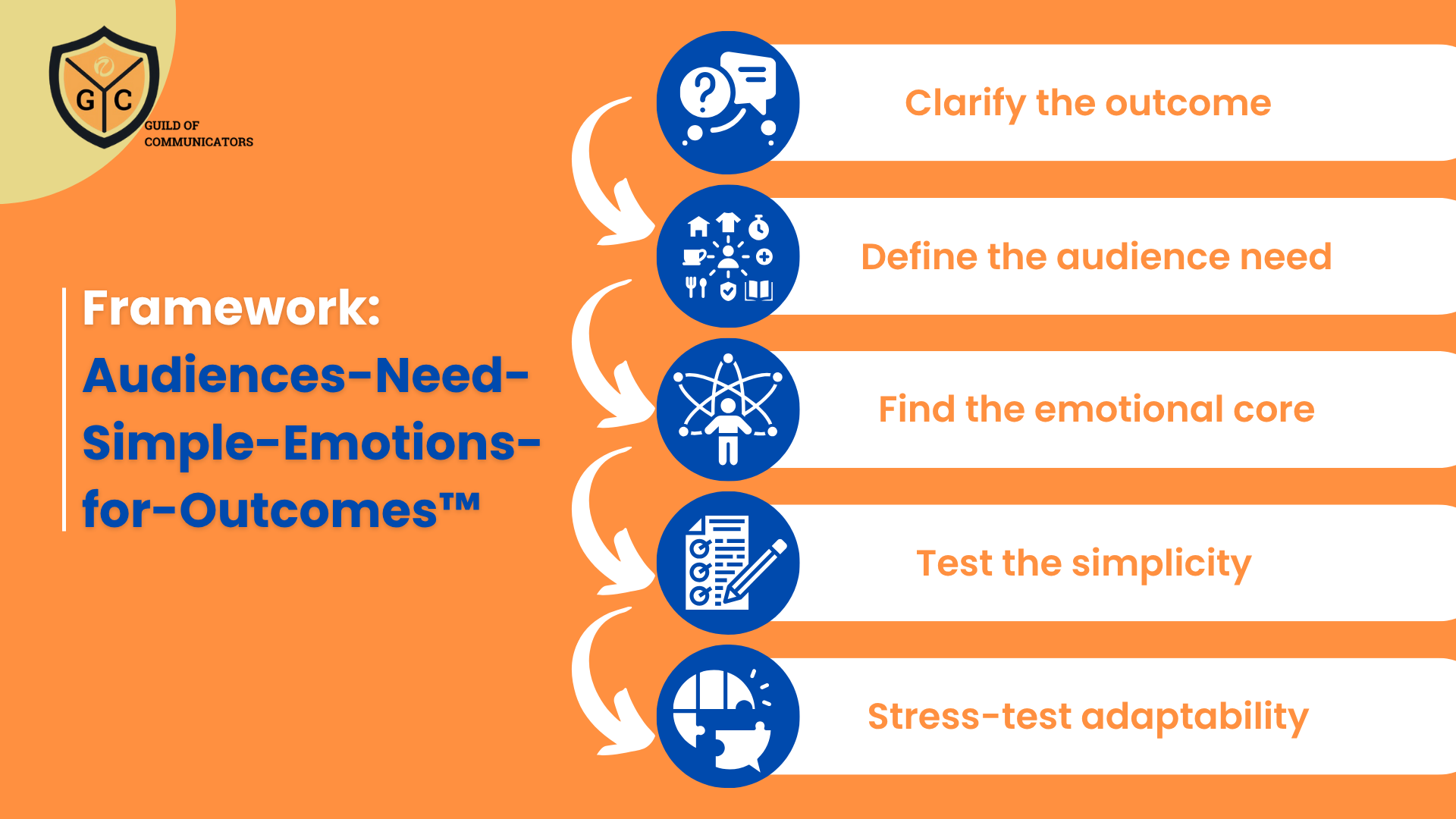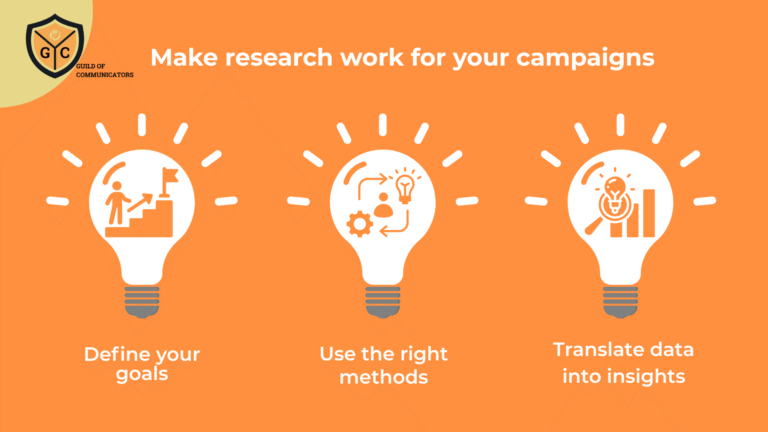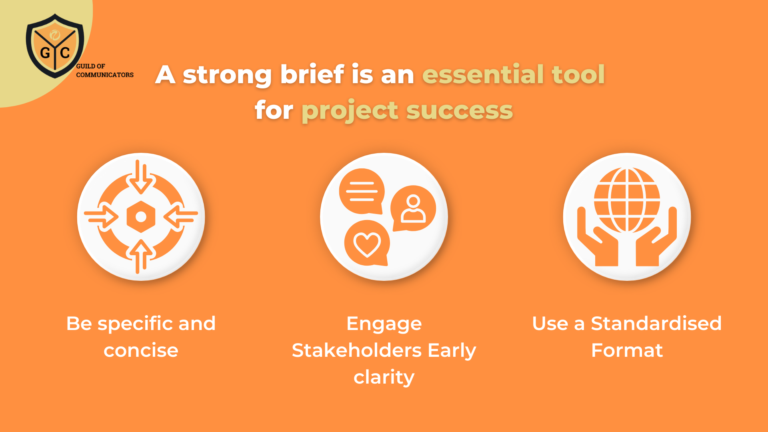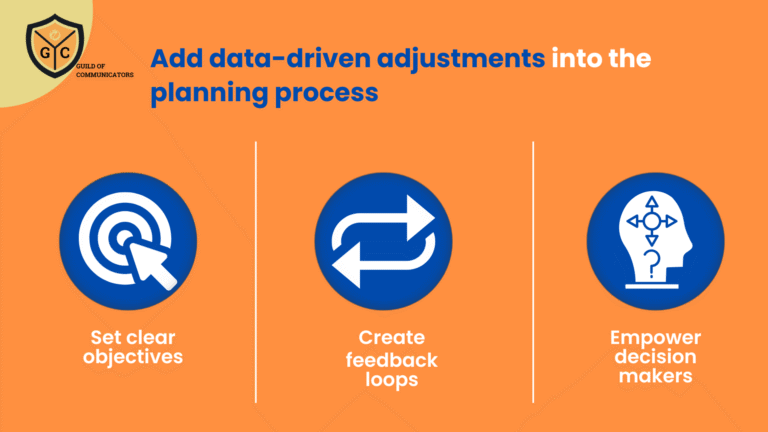Communications and creativity are closely connected. At its best, communication activates human curiosity and interest. That’s what makes it effective—especially in communications efforts and outreach.
Our audiences don’t engage because we push messages out. They engage when something captures their attention and holds it long enough for a message to land. This is where big ideas matter.
Big ideas should not be thought of as mere slogans or digital hooks for campaign. They are tools for attention, alignment, and action.
Why a Channels-First Mindset Holds Us Back
Some communicators limit their campaigns by sticking to only one or two channels. This often happens when teams rely only on earned media or focus solely on one type of output such as press coverage.
This approach, while perhaps comfortable or traditional, can inadvertently limit the potential reach and resonance of our messaging.
Audiences don’t live in channels. They move fluidly across platforms, mediums, and content types. When campaigns stay within one format or place, they fail to meet people where they are.
By imposing these restrictions, we may miss valuable opportunities to engage audiences where they are most receptive and through methods that could yield greater impact.
Campaign effectiveness improves when communicators start with the audience, not the platform.
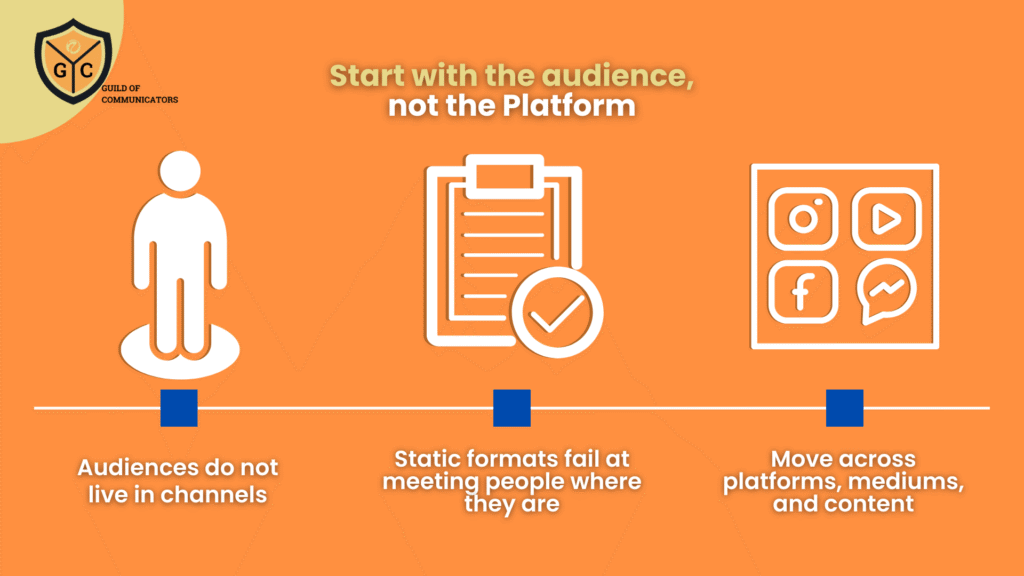
Reframing Our Role in Reaching Audiences
Many teams believe that communications are limited to the platforms and tools they own. They avoid outreach to certain audiences, assuming that other business functions or teams “own” the relationship. This perspective leads to a narrowed view of what is possible within a communications role.
But communication itself—messaging, meaning, persuasion—is audience agnostic. It isn’t tied to a specific channel or stakeholder group. It’s a discipline focused on helping people understand and act.
The core responsibility of a communicator is to support and facilitate this outreach, regardless of the platform or the perceived internal ‘ownership’ of an audience segment. Effective messaging transcends these artificial boundaries.
What Makes an Idea ‘Big’ in Public Relations and Communications
A big idea is a unifying concept that gives a campaign clarity and emotional weight. It makes the message memorable and relevant to the audience.
It serves as a central theme that can be expressed across multiple platforms, channels and to varied audiences.
Here are three essential characteristics of a big idea:
- It is audience-centred and relevant. A big idea speaks to something people already care about.
- It is conceptually simple. The idea is easy to understand and explain—even if the issue is complex.
- It is adaptable and often unexpected. A strong idea can stretch across formats, platforms, and messages without losing its impact. It offers a fresh perspective or challenges conventional thinking, thereby capturing attention.
When these elements are in place, a big idea doesn’t just hold attention—it increases the chances that people will engage and act.
Why Big Ideas Stick: A Cognitive View
Big ideas work because of how the human brain processes information. When something feels new and relevant, we naturally pay more attention.
Two cognitive biases are particularly useful to understand:
- Salience bias: Our attention is drawn to things that stand out, seem different, or feel especially relevant.
- Cognitive fluency: We prefer ideas that are easy to understand and process. If something makes sense quickly, we trust and remember it more.
These two tendencies explain why well-structured, emotionally resonant ideas often outperform complex or fragmented messaging.
Simplicity and relevance are not “nice to have” qualities. They are fundamental to how audiences respond.
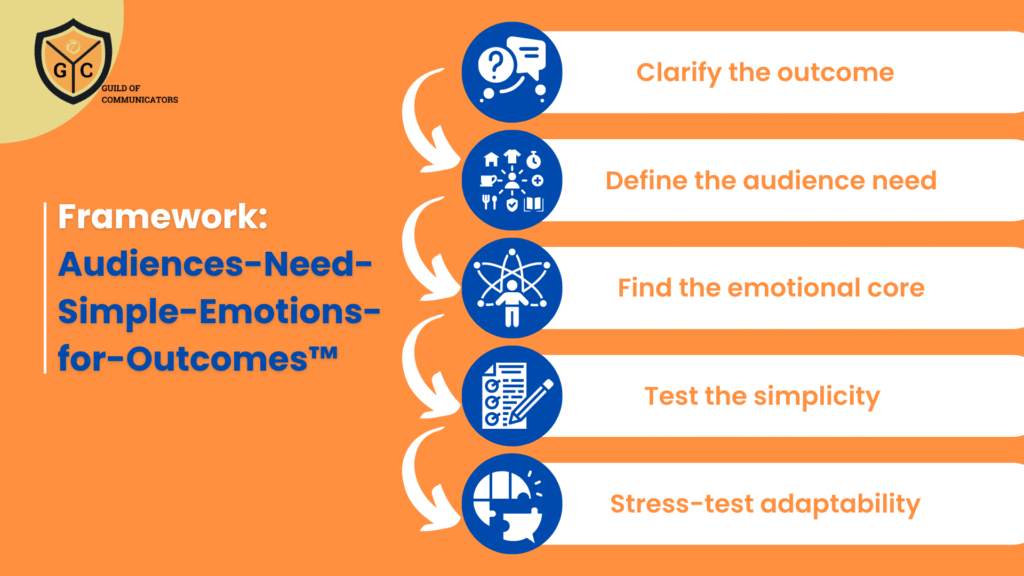
How to Move from Insight to Impact
Creating a big idea is not about waiting for inspiration. It’s a structured process grounded in audience insight and creative thinking.
Here’s our 5-step framework – Audiences-Need-Simple-Emotions-for-Outcomes™ – to guide you:
- Clarify the outcome
What do you want the audience to think, feel, or do? Be specific. The clearer the outcome, the stronger the idea can become What are you trying to achieve outcome-wise? Is it to raise awareness, change perception, or drive a specific action? A precise objective is the foundation of a relevant big idea. - Define the audience need
What matters to the audience? What is their problem, desire, or belief about this topic? A big idea must connect with this. Investigate your audience’s motivations, challenges, and the context in which they receive information. This insight is crucial for ensuring your idea is relevant and resonant. - Find the emotional core
Identify the feeling or motivation that connects the message to the outcome. People act when they care. Uncover a key insight, unmet need, or point of tension that your big idea can address. This is often the spark that ignites a powerful concept. - Test the simplicity
Can the idea be explained in one sentence? If not, it may not be ready. Keep refining until it’s easy to grasp. Ensure the big idea can be articulated clearly and concisely. If possible, test the idea with a sample of your target audience to gauge its potential impact and clarity before full-scale implementation. - Stress-test adaptability
Can the idea work across different channels and formats? A good test is whether it can be used in a speech, a video, and a headline without losing impact. Evaluate ideas against the characteristics of a strong big idea: simplicity, unexpectedness, and relevance.
This process helps communicators create campaign ideas that are strategic and usable across the campaign or programme.
Big ideas are not just a creative flourish. They are essential tools for impact.
When communicators move beyond surface-level outputs and start shaping messages around strong, strategic ideas, they strengthen their role and their outcomes.
Structured thinking leads to better work.
*****
Join the Guild of Communicators at www.gocommunicators.com.
The Guild of Communicators (Go Communicators) stands as the preferred community for communicators seeking to elevate their craft. Through our Academy of Excellence, we provide best-in-class frameworks, fit-for-purpose resources, and opportunities that support members in achieving professional excellence.
We provide the following resources, tools and opportunities to members:
- Best-in-Class Resources: We provide our members with access to frameworks, playbooks and tools that empower them to achieve and maintain professional excellence.
- Continuous Learning and Growth: Through our comprehensive training programmes, workshops, delivered digitally, 24/7 and in-person, we support the ongoing professional development of communicators.
- A Supportive Network: GOC fosters a vibrant community where communicators can connect, collaborate, and support each other, creating a network that champions mutual growth and success.
- Shared Knowledge and Expertise: Our members benefit from the collective wisdom and experience of a diverse group of communication professionals, enhancing their skills and perspectives.
Go Communicators is dedicated to amplifying the impact and value that communicators bring to their organisations, highlighting their crucial role in driving success and growth.
We equip our members with the strategies and tools needed to become influential leaders and business partners within their organisations, enhancing their ability to drive positive change and outcomes.
Through our support and resources, communicators can demonstrate clear, measurable outcomes that showcase their value and impact, reinforcing their importance to their organisations.
Join the Guild of Communicators at www.gocommunicators.com
Subscribe to join over 1500+ communicators and brands getting value every Tuesday while reading A Communicator’s Perspective, our weekly newsletter.

